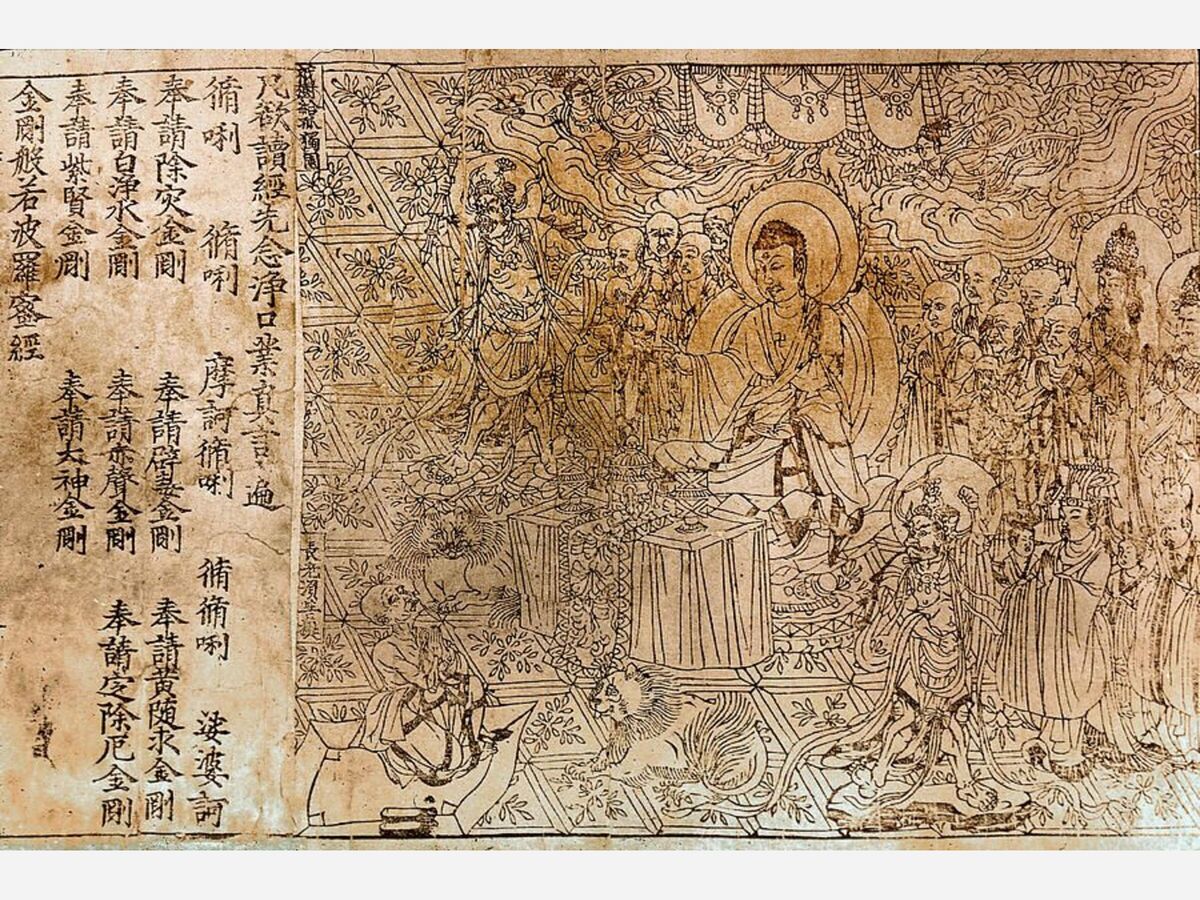Image


Many of us mistakenly believe the Gutenberg Bible was the earliest written book of early times of mass produced books for the elite. The reality is yes indeed is was one of the early mass produced books of the ancients however May 11th is a historical day for printing as the assumed first was printed that day in the year 868 and is stamped with the actual release date of May 11th, 868.
The Gutenberg Bible (also known as the 42-line Bible, the Mazarin Bible or the B42) was among the earliest major books printed using mass-produced movable metal type in Europe. It marked the start of the "Gutenberg Revolution" and the age of printed books in the West. The book is valued and revered for its high aesthetic and artistic qualities as well as its historic significance.
It is an edition of the Latin Vulgate printed in the 1450s by Johannes Gutenberg in Mainz, in present-day Germany. Forty-nine copies (or substantial portions of copies) have survived. They are thought to be among the world's most valuable books, although no complete copy has been sold since 1978.
In March 1455, the future Pope Pius II wrote that he had seen pages from the Gutenberg Bible displayed in Frankfurt to promote the edition, and that either 158 or 180 copies had been printed (he cited sources for both numbers).
The 36-line Bible, said to be the second printed Bible, is also referred to sometimes as a Gutenberg Bible, but may be the work of another printer.
The book printed in 868 originated in China for the 'public domain."
The Diamond Sutra (Sanskrit: Vajracchedikā Prajñāpāramitā Sūtra) is a Mahāyāna (Buddhist) sutra from the genre of Prajñāpāramitā ('perfection of wisdom') sutras. Translated into a variety of languages over a broad geographic range, the Diamond Sūtra is one of the most influential Mahayana sutras in East Asia, and it is particularly prominent within the Chan (or Zen) tradition, along with the Heart Sutra.
Many of us mistakenly believe the Gutenberg Bible was the earliest written book of early times of mass produced books for the elite. The reality is yes indeed is was one of the early mass produced books of the ancients however May 11th is a historical day for printing as the assumed first was printed that day in the year 868 and is stamped with the actual release date of May 11th, 868.
The Gutenberg Bible (also known as the 42-line Bible, the Mazarin Bible or the B42) was among the earliest major books printed using mass-produced movable metal type in Europe. It marked the start of the "Gutenberg Revolution" and the age of printed books in the West. The book is valued and revered for its high aesthetic and artistic qualities as well as its historic significance.
It is an edition of the Latin Vulgate printed in the 1450s by Johannes Gutenberg in Mainz, in present-day Germany. Forty-nine copies (or substantial portions of copies) have survived. They are thought to be among the world's most valuable books, although no complete copy has been sold since 1978.
In March 1455, the future Pope Pius II wrote that he had seen pages from the Gutenberg Bible displayed in Frankfurt to promote the edition, and that either 158 or 180 copies had been printed (he cited sources for both numbers).
The 36-line Bible, said to be the second printed Bible, is also referred to sometimes as a Gutenberg Bible, but may be the work of another printer.
The book printed in 868 originated in China for the 'public domain."
The Diamond Sutra (Sanskrit: Vajracchedikā Prajñāpāramitā Sūtra) is a Mahāyāna (Buddhist) sutra from the genre of Prajñāpāramitā ('perfection of wisdom') sutras. Translated into a variety of languages over a broad geographic range, the Diamond Sūtra is one of the most influential Mahayana sutras in East Asia, and it is particularly prominent within the Chan (or Zen) tradition, along with the Heart Sutra.
Per Wikipedia
A copy of the Tang-dynasty Chinese version of the Diamond Sūtra was found among the Dunhuang manuscripts in 1900 by Daoist monk Wang Yuanlu and sold to Aurel Stein in 1907.[2] They are dated back to 11 May 868.[3] It is, in the words of the British Library, "the earliest dated printed book"
It is also the first known creative work with an explicit public-domain dedication, as its colophon at the end states that it was created "for universal free distribution".
It is also the first known creative work with an explicit public-domain dedication, as its colophon at the end states that it was created "for universal free distribution".
It is also the first known creative work with an explicit public-domain dedication, as its colophon at the end states that it was created "for universal free distribution"
The Diamond Sutra is one of the most historically important texts in the Buddhist faith, in part because a copy of it is the oldest surviving dated printed book in the world (868 A.D.). Also known by its Sanskrit title Vajracchedika, the Diamond Sutra posits that something is what it is only because of what it is not.
There is a woodblock-printed copy of the Diamond Sutra in the British Library which, although not the earliest example of block printing, is the earliest example which bears an actual date.
The extant copy is in the form of a scroll about five metres (16 ft) long. The archaeologist Sir Marc Aurel Stein purchased it in 1907 in the walled-up Mogao Caves near Dunhuang in northwest China from a monk guarding the caves – known as the "Caves of the Thousand Buddhas".
The colophon, at the inner end, reads:
Reverently made for universal free distribution by Wang Jie on behalf of his two parents on the 15th of the 4th moon of the 9th year of Xiantong [11 May 868]
The British Library website allows readers to view the Diamond Sūtra in its entirety.
Sources Wikipedia, BBC and The British Library Site, New York Public Library System.
 Guttenberg Bible on Display New York Public Library. (Alamogordo Town News)
Guttenberg Bible on Display New York Public Library. (Alamogordo Town News)